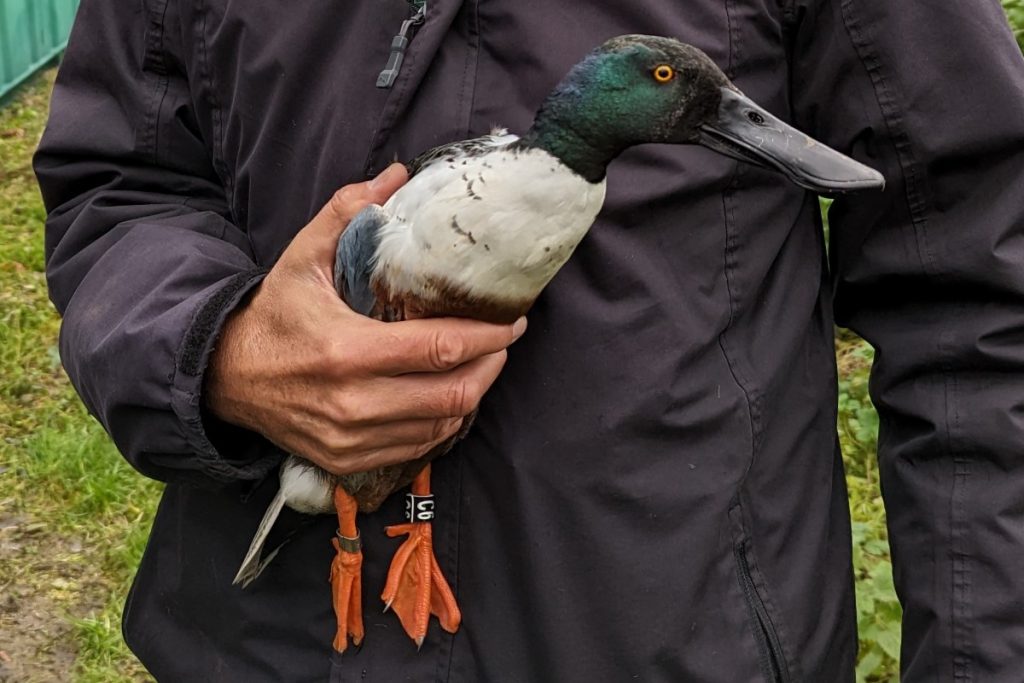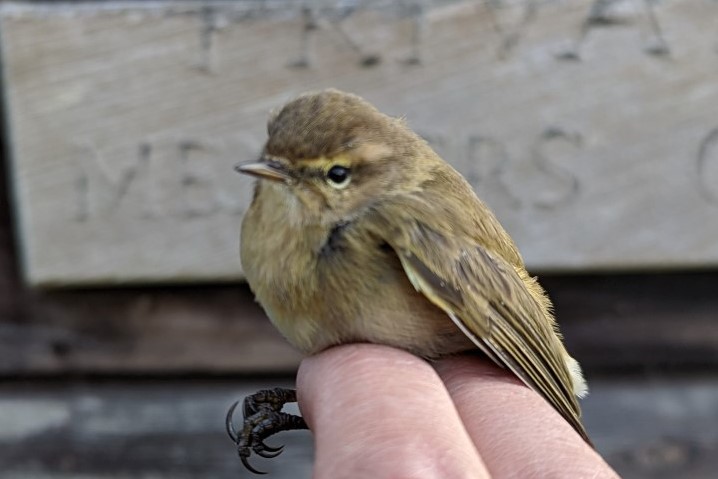Ringing and results
More foreign visitors arriving
We’ve encountered two refugees fleeing wintry weather further east in the past couple of weeks. They’ve got a story to tell us if we can work it out!

The first to come to our attention was a Shoveler. These handsome ducks are not often caught – in 2021, there was just a single adult Shoveler ringed, plus 17 ducklings, in the whole of the UK, so to catch a pair was special. Even better, the drake proved not only to be ringed already, but to have received its ring in Germany!
The ring was very worn – we had trouble reading the name of the ringing scheme and the number. This suggests that this bird, an adult male, might be fairly old, so we await details of its origins with considerable interest. We replaced the worn ring with a nice shiny new one, and added a colour ring for good measure, as part of the Southern Colour Ringing Group study.
We’ve had just a couple of recoveries of Shovelers in the past, birds that went to Essex and France, a reasonable return for just 43 birds ringed; but we’ve had no previous controls. (A recovery is a bird we ringed that is reported from elsewhere, whilst a control is a bird ringed somewhere else that we then catch.)
Shovelers breed across northern Europe and Asia as far as north-west America. In Britain, birds mainly breed in the eastern half of the country but more commonly further north than Rye Meads. British breeding birds tend to go south for the winter, typically to Iberia, whereas our wintering birds come from eastern Europe, so a bird here in winter with a German ring on is consistent with that picture. Shovelers also, like many ducks, pair up on their wintering grounds, and the male then follows the female back to her natal area. Since we caught a male and an unringed female together, it’s likely they are a pair. Where did the female originate? Our male will follow her back wherever that is. This is how the duck gene pool gets mixed up, and why ducks don’t develop regional races like many other birds.

Our other immigrant was a wintering Chiffchaff, caught in the South Lagoons. Chiffchaffs now regularly winter in Britain, a trend that started to increase in the 1970s and 1980s, leading to the present situation where our ringing reveals that as many as 50 Chiffchaffs regularly visit Rye Meads in the course of a winter. Originally, Rye Meads was favoured because comparatively warm water issuing from the sewage treatment works enabled a warmer microclimate in which insects continued to be active. Latterly, however, Chiffchaffs are to be found all over the site in winter, not just at lagoon margins.
So when a ringing session turned up another ringed Chiffchaff, we were pleased, but not especially excited, until the bird was processed and the ring read – with the address of the Danish ringing scheme! Recoveries and controls of our wintering Chiffchaffs have previously found three birds from Denmark, plus one just across the water in Sweden, so it seems this is an area where our wintering birds spend the summer.
We are looking forward to finding out exactly where and when these two birds were ringed, which will give us more information about whether they were ringed where they were breeding or hatched, or if they might have been already passing through that area. Finding out this kind of useful information about our birds is why ringing is such a valuable and engaging activity!
